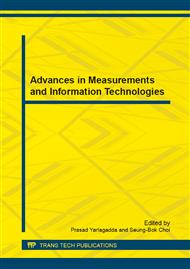p.266
p.273
p.277
p.281
p.284
p.289
p.293
p.297
p.301
Modal Experiment and Analysis of a Self-Anchored Suspension Bridge
Abstract:
Modal experiment and 3D finite element analysis are performed on a newly-built self-anchored suspension bridge. The structural modal parameters are identified under ambient vibration excitation. Before that, a 3D finite element model of the bridge is generated using a commercially available finite element package. The measured data as well as the calculated are compared carefully. It illustrates that both of them are in reasonable concordance. The natural frequency of the actual structure is relatively higher than that of finite element model which means the actual bridge is much stiffer than its original design model.
Info:
Periodical:
Pages:
284-288
Citation:
Online since:
February 2014
Authors:
Price:
Сopyright:
© 2014 Trans Tech Publications Ltd. All Rights Reserved
Share:
Citation:


